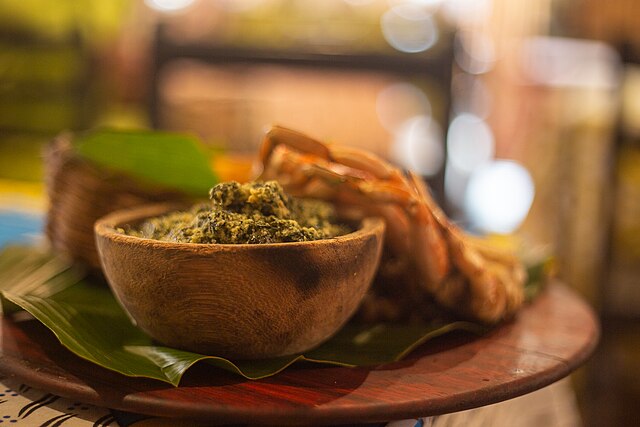In the equatorial heart of Central Africa, Cameroon’s kitchens reflect the country’s layered identity. Often described as “Africa in miniature” for its geographical and cultural breadth, the nation’s food traditions mirror its diversity—shaped by indigenous practices, colonial legacies, and the distinct rhythms of its ten regions. From the slow-cooked stews of the forest belt to the spice-laden street stalls of its cities, Cameroonian cuisine offers a portrait of a country in which taste and heritage are inseparable.
At the center of this tapestry stands Ndolé, a stew whose reputation has crossed borders. Bitter leaves—harvested from a plant native to West and Central Africa—form its foundation, their earthy sharpness softened by ground peanuts and balanced with beef, shrimp, or fish. Served alongside plantains, bobolo, or miondo, Ndolé appears on tables during weddings, festivals, and family milestones, a dish both celebratory and familiar.
In the southwest, the Manyu region has given the country Eru, a vegetable soup prized for its depth of flavor and nutritional weight. The shredded eru leaves, cooked with waterleaf or spinach, mingle with palm oil, smoked fish, and beef, then arrive at the table with fermented water-fufu or garri. Its preparation is communal, often involving several hands and an unhurried afternoon.
Some dishes are as much performance as they are sustenance. Ekwang—made by grating cocoyams, wrapping the paste in cocoyam leaves, and simmering it with fish, meat, palm oil, and crayfish—is one such example. The process demands patience, and its presence at gatherings in Bakweri, Bafaw, and Oroko communities signals an occasion worthy of the effort.
In the highland Northwest, Achu Soup brings a burst of color to the table. Known locally as “Yellow Soup,” it draws its hue from a blend of palm oil, spices, and limestone, served alongside pounded cocoyam and accompanied by meat or fish. The dish carries ceremonial weight, marking both joyful and solemn events.
Beyond home kitchens, the streets pulse with a different energy. Meat skewers known as “Cinquante Cinquante” are a fixture in markets and roadside stalls—thin strips of marinated sheep, goat, or veal, grilled over wood fires and sold for 50 CFA francs. In Yaoundé and Douala, the scent of sizzling meat cuts through the evening air as vendors work grills under bare light bulbs.
Some recipes began as symbols of status. Poulet Directeur Général, a dish of chicken, fried plantains, and vegetables in tomato-rich sauce, once appeared only at tables of high-ranking officials. Today, it is common at weddings and holidays, its name a reminder of origins in privilege.
In rural areas, simpler staples prevail. Kwacoco, made from pureed cocoyam steamed in banana leaves, is frequently paired with Mbanga Soup, a palm nut broth enriched with smoked fish. Together they provide the calories and fats needed for days spent in fields and on footpaths.
Across its regions, Cameroon’s food is not merely sustenance but an archive—holding traces of migration, trade, and adaptation. Recipes pass by word of mouth, shifting slightly with each generation yet anchored in place. In an era when food cultures face the pressures of homogenization, the country’s commitment to preserving its culinary heritage stands as an act of cultural continuity, sustaining both body and identity.
Sources:
- Camerland, “Ndolé and the Story of Cameroon’s National Dish.”
- African Food Network, “Traditional Cameroonian Dishes.”
- Anadolu Ajansı, “Street Food in Cameroon’s Urban Centers.”
- Vikipedi, “Cameroonian Cuisine.”
- Flavorful Explorer, “Achu Soup: Culinary Heritage of Cameroon’s Northwest.”


